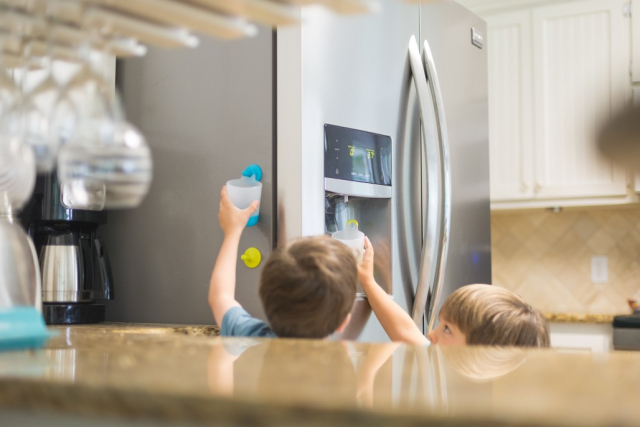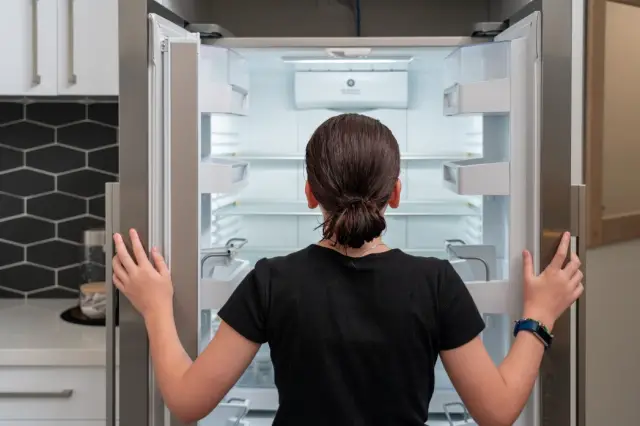Many times, decorating magazines show us homes that look like palaces; They are spacious, bright places, full of rooms and with kitchens and bathrooms that leave us speechless. However, there is a reality that most of us suffer from, and that is that the spaces we have are not that gigantic. For example, kitchens and bathrooms tend to have a rather small space where storing crockery, utensils and other objects ends up looking like an advanced level Tetris. As we know that this is a disease that happens to a large percentage of the population, here we will talk a little about how to optimize one of the most difficult spaces in terms of order: our kitchens.
First point to consider
If we want to succeed with our purpose, we cannot improvise, because we will end up more disorganized than we were at the beginning and we will end up abandoning the project. So, to schematize and that the task in question does not become a nuisance, the first item with which we can start is to know the meters that our kitchen has. Then we must see the storage space (cupboards, pantries, furniture, drawers, even the counter) and, finally, see what the utensils, appliances and the space they occupy. The number of kitchen appliances that exist today are too practical for everyday use: microwaves, electric hobs, freezers and air fryers are becoming essential in our lives, but, in contrast, they also take up a lot of space, which means less space to spend on other things.
Second point for a better organization

Well, once we know how much space we have and we already have a clearer notion of what is in the kitchen, our second step will be to think about which of all the things we have that really serve us and give us use, and which are the objects that we have them in case at some point we need them more than for their daily utility (a freezer or vertical freezer that we use every day is not the same as a popcorn machine, let's be realistic). Once and for all, we must face that many of those things that we keep "just in case" end up being a collection of dust that take up useful space for pots or other objects that are then swarming everywhere.
Third point: leave behind what does not serve us
For many it can be a bit difficult, because many times and as silly as it sounds, objects are not only utilitarian, but also have a sentimental value for those who own them. A little in the Marie Kondo style, we must begin to let go of what is not useful to us; those appliances and pots that, for all the symbolic attachment they represent, are one of the great obstacles to a well-organized kitchen. Also, letting them go doesn't exactly mean throwing them away. If they are in good condition, there will always be someone who will take more advantage of it, while we free up an important place.
Fourth point: appliances for small spaces
There are some kitchens with a certain size that allow us to place appliances of considerable size without this representing a problem, but not all homes have that privilege; there are quite small kitchens , the kind that look like a rubik's cube, and in which, with the simple fact of leaving a couple of dirty dishes on the counter, we already generate enormous chaos. Obviously, in a situation like that, thinking of a large refrigerator is totally ruled out; yes they are divine and everything, but it will not help us at all to save space. We know that many people usually make meal preps, for example, which they then send to freeze to always have something ready in the freezer . For those cases, there is the vertical freezer, a very convenient appliance for those who, many times, get more out of the freezer than the refrigerator itself.
But what if we also need space for refrigeration?
There is nothing to worry about, because we know that there are things that should not go in the freezer and that need slightly more moderate temperatures. There are many freezers where you can adjust the temperature. They even have compartments for all kinds of food: drawers for fruits and vegetables, shelves for plates, tupperware and bottles, etc. Vertical freezers practically have the same characteristics as a conventional refrigerator, but with the advantage that, if necessary, we can store food that must be kept at temperatures below ten degrees Celsius without any problems. Without a doubt, these freezers are ideal for our plan to take advantage of space.
Fifth point: choose the kitchen that best suits the available space
Earlier we mentioned small kitchens. For these cases, for example, having a kitchen with an oven and everything can be very impractical, since it represents thirty, sometimes forty percent of the total kitchen space. If that is our situation, anelectric hob may be the best choice: there are hobs with only two burners, for example, which will be of great help and will take up much less space. The good thing about these practical devices is that we can opt for an electric one if it is more comfortable for us, or for one that works with gas, if we are a little more traditional. We will find electric hobs for all tastes and preferences.
Essential appliances can also take up little space
As we have seen, the two most important elements in a kitchen do not have to represent a hindrance when the spaces are small. A vertical freezer is as beneficial as a common refrigerator, and a countertop (whether electric or gas, with one, two, three or four burners, will be much more useful than a traditional kitchen, because, unlike this one, we can install it in a countertop and take advantage of the space for something else; for example, in that place you can place a rack intended for a small pantry, the electric oven and the microwave.
Be aware of space and take advantage of every meter
To summarize, the most important thing when organizing is to take into account each place in the room that we want to take advantage of. With that in mind and a little ingenuity, we can optimize our home to live much more comfortably.
